中国全科医学 ›› 2022, Vol. 25 ›› Issue (19): 2363-2370.DOI: 10.12114/j.issn.1007-9572.2022.0114
所属专题: 儿科最新文章合辑; 全科质控专项研究; 孕产妇健康研究最新文章合辑
肖雪1, 王宇琦1, 赖晓岚1, 钟绍涛1, 赵翠柳1, 刘丹1, 李琳1, 谭荣韶1,*( ), 杨红玲2
), 杨红玲2
收稿日期:2022-02-25
修回日期:2022-05-24
出版日期:2022-07-05
发布日期:2022-06-02
通讯作者:
谭荣韶
基金资助:
Xue XIAO1, Yuqi WANG1, Xiaolan LAI1, Shaotao ZHONG1, Cuiliu ZHAO1, Dan LIU1, Lin LI1, Rongshao TAN1,*( ), Hongling YANG2
), Hongling YANG2
Received:2022-02-25
Revised:2022-05-24
Published:2022-07-05
Online:2022-06-02
Contact:
Rongshao TAN
About author:摘要: 背景 新生儿出生体质量与个体健康息息相关,低出生体质量是早期新生儿死亡的高危因素,而巨大儿的发生不仅可增加母婴产时并发症发生风险,还可增加个体成年后罹患各种慢性病的风险。因此,寻找新生儿出生体质量的影响因素十分重要。 目的 探讨孕妇肠道菌群对新生儿出生体质量的影响。 方法 以2017年1—9月在广州市妇女儿童医疗中心出生的516例新生儿及其孕母为研究对象,根据新生儿出生体质量将其分为低出生体质量儿组(LW组,n=24)、正常体质量儿组(NW组,n=479)、巨大儿组(OW组,n=13)。采集孕母的肠道菌群参数及临床实验室检测指标,采用QIIME软件进行孕期肠道菌群组成分析和多样性分析;采用LEfSe分析,分别对三组孕妇肠道菌群属水平上的相对丰度进行两两比较,识别组间具有明显差异的菌群;通过线性模型MaAsLin进行多元分析,以捕获各实验室检测指标与微生物属之间的相关性;通过Boruta随机森林分类器模型分别基于实验室检测指标和肠道菌群分类操作单元(OTUs)构建新生儿出生体质量分类预测模型,探究孕妇肠道菌群对新生儿体质量的影响。 结果 三组孕母的肠道菌群组成分析发现,门水平中厚壁菌门(Firmicutes)物种丰富度最高,属水平里普拉梭菌(Faecalibacterium)明显富集,三组间门水平的香农指数和辛普森指数比较,差异无统计学意义(P>0.05)。三组间的LEfSe分析发现:与LW组比较,NW组链球菌(Streptococcus)和罗氏菌(Roseburia)明显富集(P<0.05),而芽孢杆菌(Bacillaceae)、萝卜属菌(Raphanus)、甲烷球形菌(Methanosphaera)、巴氏杆菌(Barnesiellaceae)、普雷沃氏菌(Paraprevotella)丰度明显降低(P<0.05);与NW组比较,OW组属巨单胞菌(Megamonas)、属粪球菌(Coprococcus)、韦荣氏菌(Veillonellaceae)、cc-115、梭菌(Closrtidiaceae)、另枝杆菌(Alistipes)明显富集(P<0.05),而布劳特氏菌(Blautia)和伊格尔兹氏菌(Eggerthella)丰度明显降低(P<0.05);与LW组比较,OW组Closrtidiaceae、Alistipes菌群明显富集(P<0.05),而Barnesiellaceae丰度明显降低(P<0.05)。基于实验室检测指标分类器模型、肠道菌群OTUs分类器模型,区分NW组与LW组的受试者工作特征曲线下面积(AUC)分别为0.62、0.77,区分NW组与OW组的AUC分别为0.65、0.78。 结论 不同出生体质量新生儿对应孕母的肠道菌群存在差异,孕母肠道菌群OTUs模型可区分新生儿出生体质量的大小,孕妇肠道菌群可能是预测新生儿体质量的一个良好指标。
| 组别 | 例数 | 年龄(岁) | 身高(cm) | 孕前体质量(kg) | 孕前BMI(kg/m2) | 孕期体质量增长(kg) |
|---|---|---|---|---|---|---|
| LW组 | 24 | 30.5±0.8 | 156.9±1.1 | 50.6±1.0 | 20.5±0.5 | 12.7±0.7 |
| NW组 | 479 | 30.1±0.2 | 159.7±0.2 | 52.0±0.3 | 20.4±0.1 | 13.2±0.2 |
| OW组 | 13 | 31.5±1.5 | 161.2±1.4 | 57.2±1.4 | 21.9±0.6 | 17.3±1.2 |
| F值 | 37.54 | 49.23 | 63.83 | 58.95 | 77.63 | |
| P值 | 0.04 | 0.03 | 0.03 | 0.03 | 0.02 |
表1 三组孕妇的基本情况比较(±s)
Table 1 General characteristic of three groups of pregnant women
| 组别 | 例数 | 年龄(岁) | 身高(cm) | 孕前体质量(kg) | 孕前BMI(kg/m2) | 孕期体质量增长(kg) |
|---|---|---|---|---|---|---|
| LW组 | 24 | 30.5±0.8 | 156.9±1.1 | 50.6±1.0 | 20.5±0.5 | 12.7±0.7 |
| NW组 | 479 | 30.1±0.2 | 159.7±0.2 | 52.0±0.3 | 20.4±0.1 | 13.2±0.2 |
| OW组 | 13 | 31.5±1.5 | 161.2±1.4 | 57.2±1.4 | 21.9±0.6 | 17.3±1.2 |
| F值 | 37.54 | 49.23 | 63.83 | 58.95 | 77.63 | |
| P值 | 0.04 | 0.03 | 0.03 | 0.03 | 0.02 |
| 组别 | 例数 | 糖化血红蛋白(%) | 红细胞比容(%) | 空腹血糖(mmol/L) | 红细胞计数(×1012/L) | 血清谷氨酰转移酶(U/L) | 血红蛋白(g/L) | 血浆纤维蛋白原(g/L) | 中性粒细胞(%) | 淋巴细胞(%) | 球蛋白(g/L) | 丙氨酸氨基转移酶(U/L) | 血清胱抑素C(mg/L) | 嗜碱性粒细胞(%) |
|---|---|---|---|---|---|---|---|---|---|---|---|---|---|---|
| LW组 | 24 | 5.3±0.6 | 37.9±6.3 | 4.7±1.1 | 3.5±1.2 | 35.0±1.9 | 92.0±11.7 | 4.0±1.0 | 73.0±11.2 | 22.0±0.9 | 23.0±0.6 | 38.0±1.1 | 1.3±1.0 | 1.3±0.4 |
| NW组 | 479 | 4.9±0.3 | 41.7±3.5 | 4.3±0.6 | 4.2±0.5 | 28.0±0.4 | 114.0±8.6 | 3.1±0.3 | 58.0±6.2 | 32.0±0.4 | 28.0±0.3 | 22.0±0.4 | 0.9±0.5 | 0.9±0.1 |
| OW组 | 13 | 5.5±0.7 | 37.2±6.8 | 4.8±1.2 | 3.6±1.1 | 37.0±1.8 | 87.0±13.0 | 3.8±0.8 | 69.0±10.4 | 24.0±0.8 | 22.0±0.7 | 43.0±1.4 | 1.3±0.9 | 1.4±0.4 |
| F值 | 365.96 | 285.62 | 168.53 | 194.71 | 170.56 | 406.85 | 263.64 | 553.90 | 342.17 | 229.73 | 646.83 | 335.94 | 224.86 | |
| P值 | <0.01 | <0.01 | <0.01 | <0.01 | <0.01 | <0.01 | <0.01 | <0.01 | <0.01 | <0.01 | <0.01 | <0.01 | <0.01 |
表2 三组孕妇实验室检测指标比较(±s)
Table 2 Results of clinical laboratory indices of three groups of pregnant women
| 组别 | 例数 | 糖化血红蛋白(%) | 红细胞比容(%) | 空腹血糖(mmol/L) | 红细胞计数(×1012/L) | 血清谷氨酰转移酶(U/L) | 血红蛋白(g/L) | 血浆纤维蛋白原(g/L) | 中性粒细胞(%) | 淋巴细胞(%) | 球蛋白(g/L) | 丙氨酸氨基转移酶(U/L) | 血清胱抑素C(mg/L) | 嗜碱性粒细胞(%) |
|---|---|---|---|---|---|---|---|---|---|---|---|---|---|---|
| LW组 | 24 | 5.3±0.6 | 37.9±6.3 | 4.7±1.1 | 3.5±1.2 | 35.0±1.9 | 92.0±11.7 | 4.0±1.0 | 73.0±11.2 | 22.0±0.9 | 23.0±0.6 | 38.0±1.1 | 1.3±1.0 | 1.3±0.4 |
| NW组 | 479 | 4.9±0.3 | 41.7±3.5 | 4.3±0.6 | 4.2±0.5 | 28.0±0.4 | 114.0±8.6 | 3.1±0.3 | 58.0±6.2 | 32.0±0.4 | 28.0±0.3 | 22.0±0.4 | 0.9±0.5 | 0.9±0.1 |
| OW组 | 13 | 5.5±0.7 | 37.2±6.8 | 4.8±1.2 | 3.6±1.1 | 37.0±1.8 | 87.0±13.0 | 3.8±0.8 | 69.0±10.4 | 24.0±0.8 | 22.0±0.7 | 43.0±1.4 | 1.3±0.9 | 1.4±0.4 |
| F值 | 365.96 | 285.62 | 168.53 | 194.71 | 170.56 | 406.85 | 263.64 | 553.90 | 342.17 | 229.73 | 646.83 | 335.94 | 224.86 | |
| P值 | <0.01 | <0.01 | <0.01 | <0.01 | <0.01 | <0.01 | <0.01 | <0.01 | <0.01 | <0.01 | <0.01 | <0.01 | <0.01 |
| 组别 | 例数 | Firmicutes | Bacteroidetes | Actinobacteria | Protecobacteria | Euryarchaeota | Verrucomicrobia | 其他 |
|---|---|---|---|---|---|---|---|---|
| LW组 | 24 | 85.52±9.20 | 5.63±0.70 | 5.92±0.70 | 1.29±0.20 | 0.11±0.01 | 1.43±0.20 | 0.10±0.01 |
| NW组 | 479 | 78.19±8.10 | 13.16±1.30 | 5.25±0.60 | 2.13±0.20 | 0.41±0.04 | 0.75±0.20 | 0.11±0.01 |
| OW组 | 13 | 78.42±8.90 | 13.67±1.70 | 1.93±0.30 | 1.68±0.30 | 0.35±0.06 | 3.86±0.50 | 0.09±0.01 |
| F值 | 12.90 | 14.60 | 9.30 | 10.50 | 8.40 | 13.30 | 5.20 | |
| P值 | 0.23 | 0.18 | 0.41 | 0.37 | 0.45 | 0.20 | 0.73 |
表3 三组孕妇肠道菌群在门水平上的菌群相对丰度比较(±s,%)
Table 3 The average relative abundance of intestinal floras at the phylum level of mothers of three groups of babies divided by birth weight
| 组别 | 例数 | Firmicutes | Bacteroidetes | Actinobacteria | Protecobacteria | Euryarchaeota | Verrucomicrobia | 其他 |
|---|---|---|---|---|---|---|---|---|
| LW组 | 24 | 85.52±9.20 | 5.63±0.70 | 5.92±0.70 | 1.29±0.20 | 0.11±0.01 | 1.43±0.20 | 0.10±0.01 |
| NW组 | 479 | 78.19±8.10 | 13.16±1.30 | 5.25±0.60 | 2.13±0.20 | 0.41±0.04 | 0.75±0.20 | 0.11±0.01 |
| OW组 | 13 | 78.42±8.90 | 13.67±1.70 | 1.93±0.30 | 1.68±0.30 | 0.35±0.06 | 3.86±0.50 | 0.09±0.01 |
| F值 | 12.90 | 14.60 | 9.30 | 10.50 | 8.40 | 13.30 | 5.20 | |
| P值 | 0.23 | 0.18 | 0.41 | 0.37 | 0.45 | 0.20 | 0.73 |
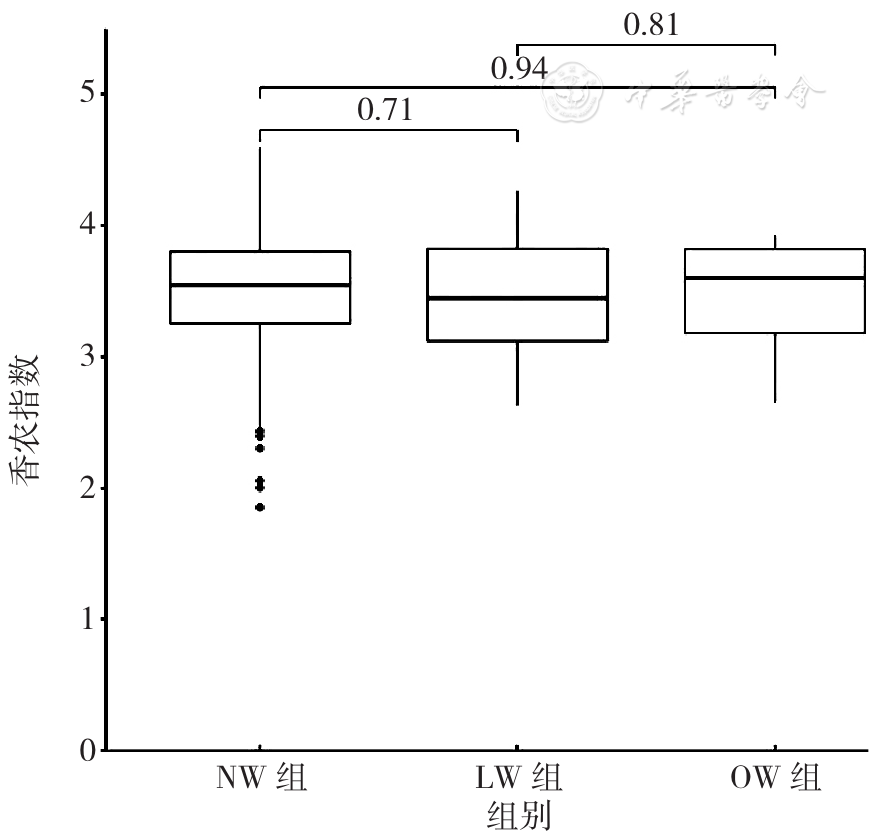
图1 三组孕妇肠道菌群Alpha多样性香农指数比较注:LW组为低出生体质量儿组(出生体质量<2 500 g),NW组为正常体质量儿组(出生体质量为2 500~3 999 g),OW组为巨大儿组(出生体质量≥4 000 g);图中数字为组间比较的P值
Figure 1 Shannon Diversity Index measuring the alpha diversity indices of intestinal flora of mothers of three groups of babies divided by birth weight
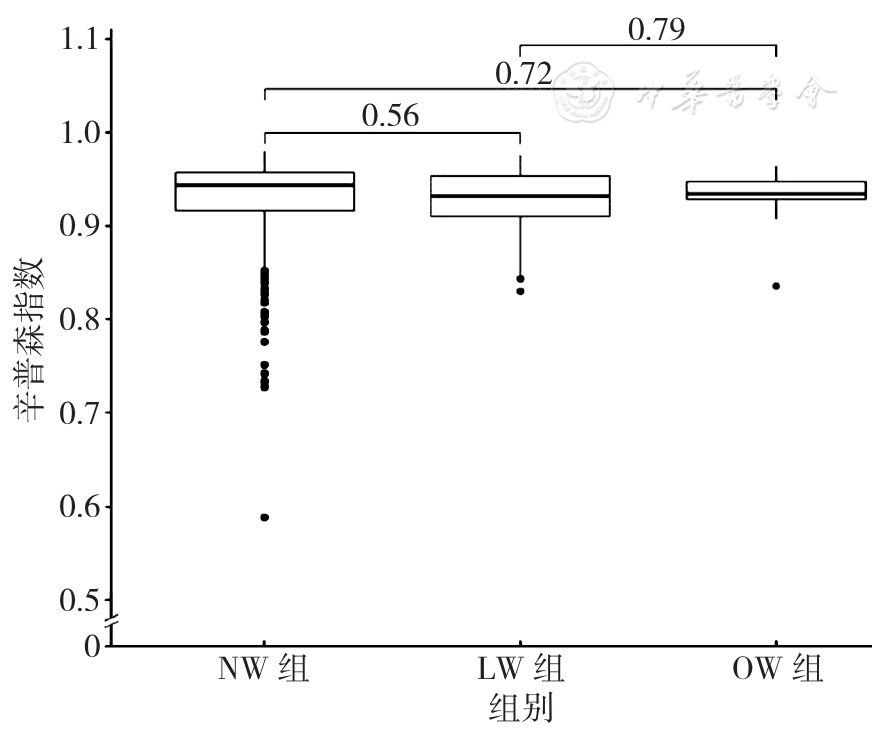
图2 三组孕妇肠道菌群Alpha多样性辛普森指数比较注:图中数字为组间比较的P值
Figure 2 Simpson's Diversity Index measuring the alpha diversity indices of intestinal flora of mothers of three groups of babies divided by birth weight
| 组别 | 例数 | Faecalibacterium | Roseburia | Blautia | Bacteroides | Megamonas | Lachnospiraceae+ | Ruminococcus | Paraprevotella | Streptococcus | 其他 |
|---|---|---|---|---|---|---|---|---|---|---|---|
| LW组 | 24 | 17.82±1.90 | 6.52±0.80 | 6.81±0.80 | 8.26±0.90 | 5.36±0.60 | 5.22±0.60 | 5.07±0.60 | 7.25±0.70 | 1.89±0.20 | 35.8±3.90 |
| NW组 | 479 | 17.39±1.60 | 8.71±0.80 | 7.96±0.80 | 5.79±0.60 | 4.35±0.50 | 6.52±0.60 | 5.81±0.60 | 5.22±0.50 | 2.75±0.30 | 35.5±3.60 |
| OW组 | 13 | 19.56±2.10 | 9.42±1.10 | 5.06±0.70 | 4.64±0.70 | 8.41±1.00 | 5.09±0.70 | 5.05±0.70 | 3.18±0.60 | 3.93±0.50 | 35.6±4.10 |
| F值 | 6.80 | 7.50 | 8.30 | 12.10 | 10.90 | 5.50 | 4.60 | 10.90 | 8.90 | 4.10 | |
| P值 | 0.66 | 0.53 | 0.45 | 0.22 | 0.34 | 0.74 | 0.80 | 0.36 | 0.43 | 0.82 |
表4 三组孕妇肠道菌群在属水平上的相对丰度比较(±s,%)
Table 4 The average relative abundance of intestinal flora at the genus level of mothers of three groups of babies divided by birth weight
| 组别 | 例数 | Faecalibacterium | Roseburia | Blautia | Bacteroides | Megamonas | Lachnospiraceae+ | Ruminococcus | Paraprevotella | Streptococcus | 其他 |
|---|---|---|---|---|---|---|---|---|---|---|---|
| LW组 | 24 | 17.82±1.90 | 6.52±0.80 | 6.81±0.80 | 8.26±0.90 | 5.36±0.60 | 5.22±0.60 | 5.07±0.60 | 7.25±0.70 | 1.89±0.20 | 35.8±3.90 |
| NW组 | 479 | 17.39±1.60 | 8.71±0.80 | 7.96±0.80 | 5.79±0.60 | 4.35±0.50 | 6.52±0.60 | 5.81±0.60 | 5.22±0.50 | 2.75±0.30 | 35.5±3.60 |
| OW组 | 13 | 19.56±2.10 | 9.42±1.10 | 5.06±0.70 | 4.64±0.70 | 8.41±1.00 | 5.09±0.70 | 5.05±0.70 | 3.18±0.60 | 3.93±0.50 | 35.6±4.10 |
| F值 | 6.80 | 7.50 | 8.30 | 12.10 | 10.90 | 5.50 | 4.60 | 10.90 | 8.90 | 4.10 | |
| P值 | 0.66 | 0.53 | 0.45 | 0.22 | 0.34 | 0.74 | 0.80 | 0.36 | 0.43 | 0.82 |
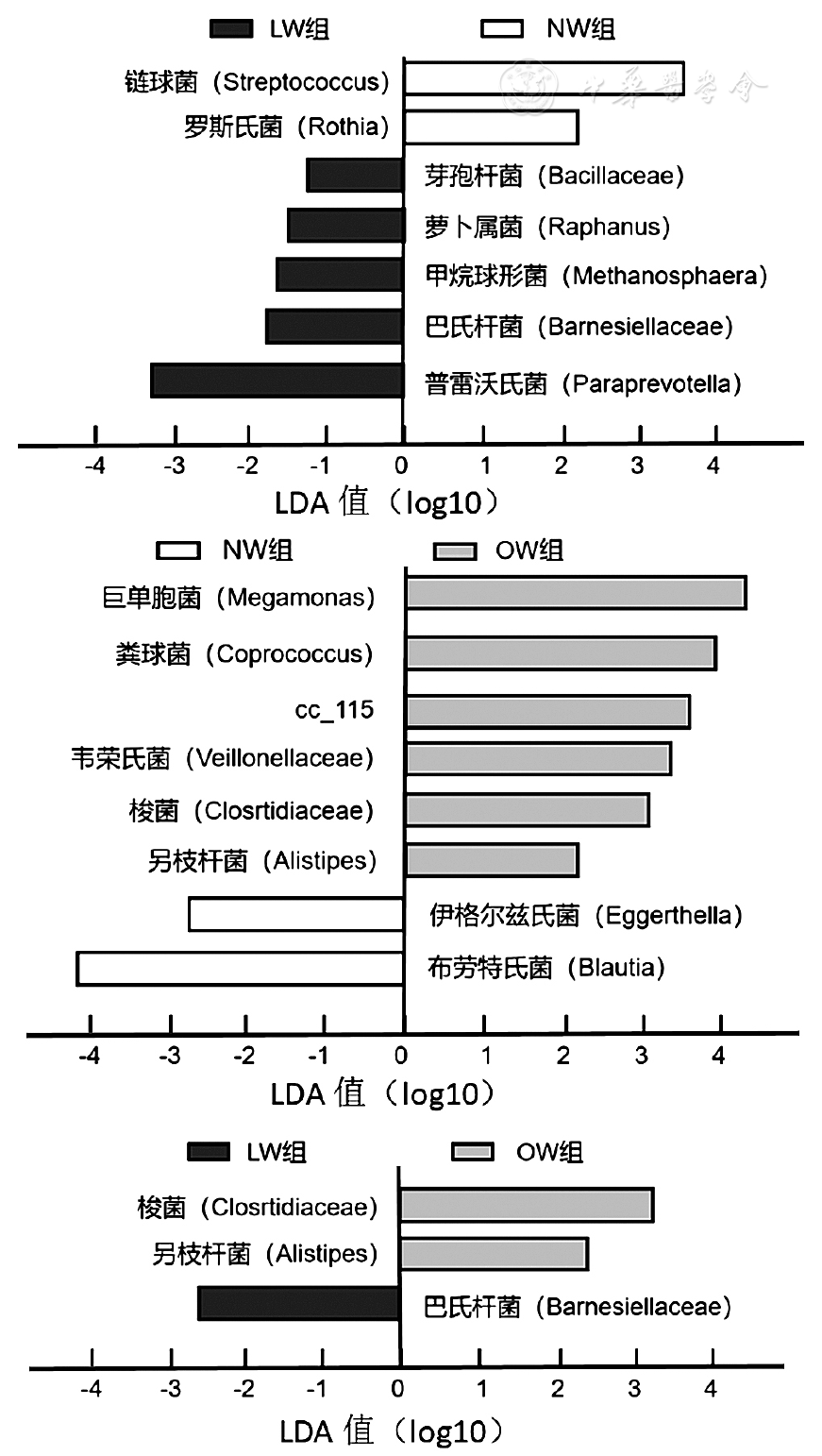
图4 三组孕妇肠道菌群属水平上的相对丰度比较注:LDA=线性判别分析;由于目前在菌种水平的基因库尚不完善,部分物种暂无对应的中文名称,对于这部分物种,本文中仅列出其英文名称;列出的菌属为组间两两比较具有统计学意义者
Figure 4 Significant differences among the intestinal flora at genus level of mothers of three groups of babies divided by birth weight
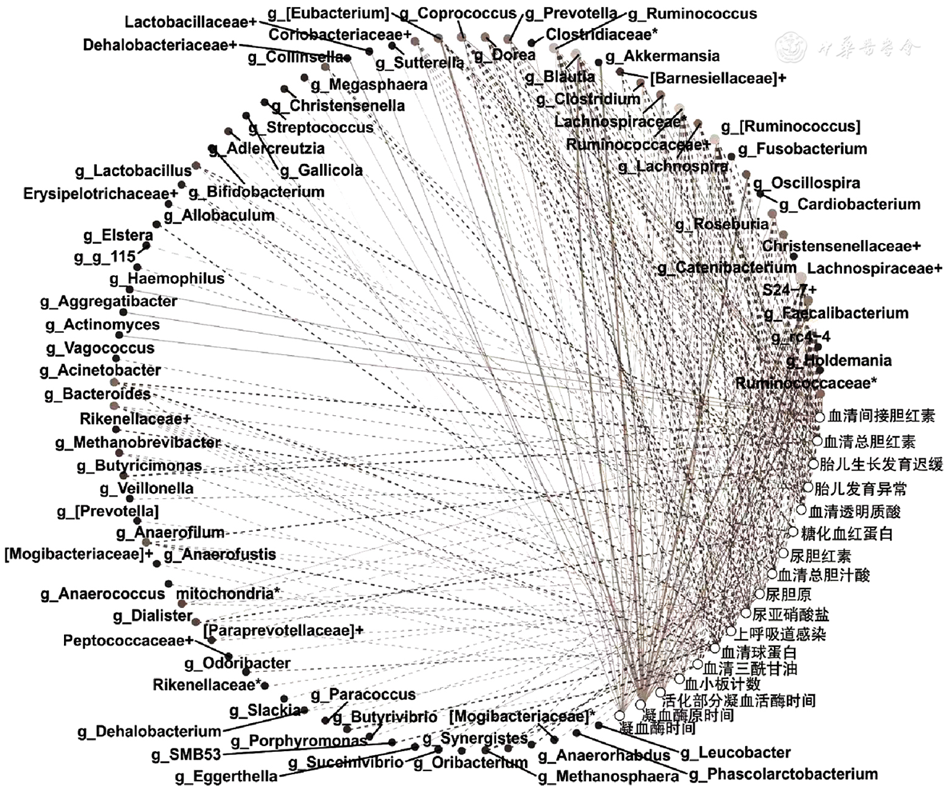
图5 孕妇实验室检测指标与肠道菌群物种的相关性网络注:图中空心点为实验室检测指标,实心点为肠道菌群物种,实线表示正相关,虚线表示负相关;Lactobacillaceae=乳酸杆菌,Eubacterium=真杆菌,Coprococcus=粪球菌,Prevotella=普氏菌,Dehalobacteriaceae=脱卤杆菌,Coriobacteriaceaeta=大肠杆菌,Clostridiaceae=梭菌,Colwellia=科维尔氏菌,Akkermansia=阿克曼氏菌,Megasphaera=巨球菌,Blautia=布劳特氏菌,Barnesiellaceae=巴氏杆菌,Christensenellaceae=克里斯滕森菌,Clostridium=梭菌,Streptococcus=链球菌,Ruminococcus=瘤胃球菌,Adlercreutzia=安德克氏菌,Ruminococcaceae=瘤胃球菌,Fusobacterium=梭杆菌,Lactobacillus=乳酸杆菌,Gallicola=叶瘿菌,Lachnospira=毛螺菌,Erysipelotrichaceae=丹毒丝菌,Bifidobacterium=双歧杆菌,Oscillospira=颤螺菌,Allobaculum=异杆菌,Cardiobacterium=心杆菌,Elstera=埃希菌,Roseburia=罗氏菌,Haemophilus=嗜血杆菌,Catenibacterium =链状杆菌,Lachnospiraceae=毛螺菌,Aggregatibacter=聚集菌,Actinomyces=放线菌,Fecalibacterium=粪杆菌,Vagococcus=球菌,Acinetobacter=不动杆菌,Holdemania=霍尔德曼氏菌,Bacteroides=拟杆菌,Rikenellaceae=理研菌,Methanobrevibacter=甲烷短杆菌,Butyricimonas=丁酸单胞菌,Veillonella=韦荣氏球菌,Anaerofilum=厌氧菌,Mogibacteriaceae=艰难杆菌,Anaerofustis=厌氧菌,Anaerococcus=厌氧球菌,mitochondria=线粒体,Dialister=小杆菌,Peptococcaceae=消化球菌,Paraprevotellaceae=帕拉普氏菌,Odoribacter=臭气杆菌,Paracoccus=副球菌,Slackia=史雷克氏菌,Dehalobacterium=脱盐杆菌,Butyrivibrio=丁酸弧菌,Porphyromonas=卟啉菌,Synergistes=互养菌,Eggerthella=伊格尔兹氏菌,Succinivibrio=琥珀酸弧菌,Oribacterium=假丁酸弧菌,Anaerorhabdus=厌氧杆菌,Leucobacter=白杆菌,Methanosphaerag=甲烷球菌,Phascolarctobacterium=芽孢杆菌;由于目前在菌种水平的基因库尚不完善,部分物种暂无对应中文名称;同一菌属不同亚株的中文名称相同
Figure 5 Correlation network between maternal laboratory test indices and intestinal flora species
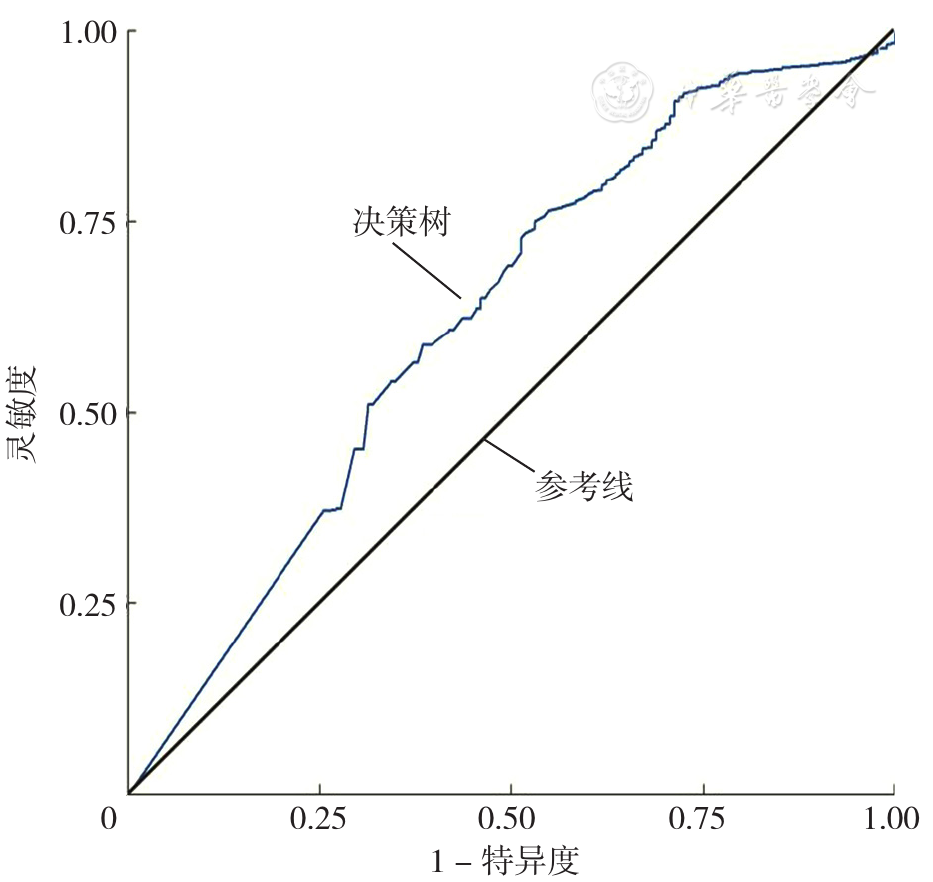
图6 基于实验室检测指标建立的区分NW组与LW组孕妇随机森林分类模型的ROC曲线注:ROC曲线=受试者工作特征曲线
Figure 6 ROC curve of random forest classification model based on maternal blood test indices for distinguishing between babies born with normal and low weight
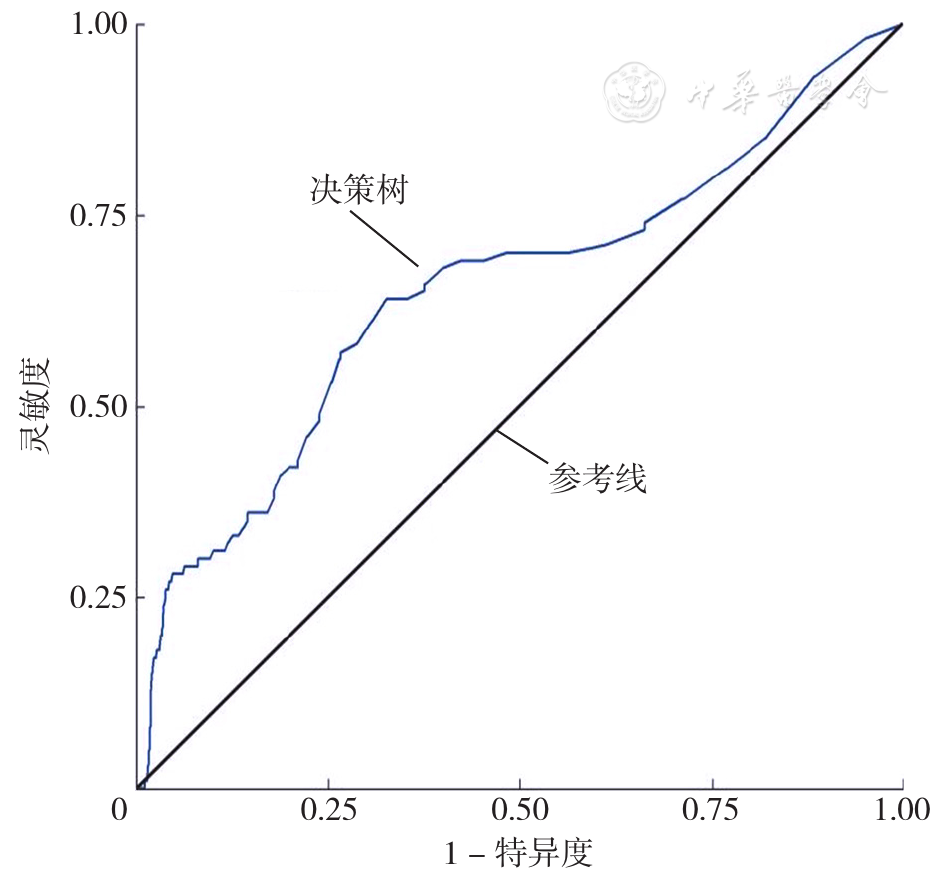
图7 基于实验室检测指标建立的区分NW组孕妇与OW组孕妇随机森林分类模型的ROC曲线
Figure 7 ROC curve of random forest classification model based on maternal blood test indices for distinguishing between a baby with normal birth weight and a macrosomia
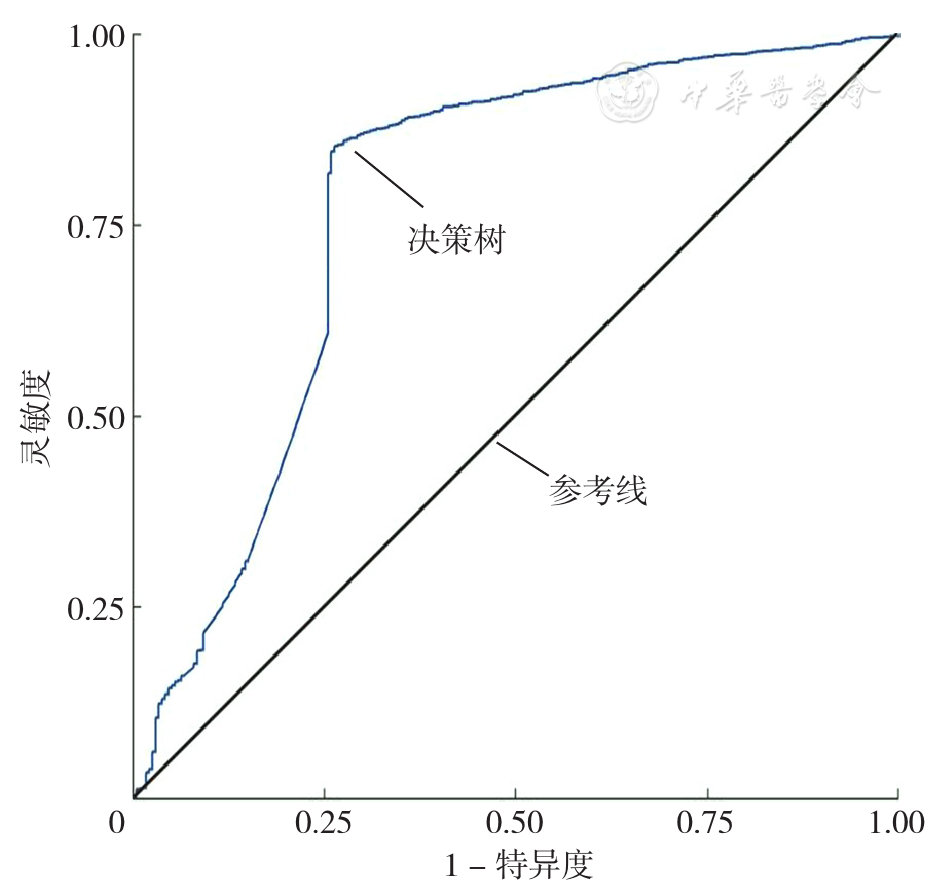
图8 基于肠道菌群OTUs建立的区分NW组孕妇与LW组孕妇随机森林分类模型的ROC曲线注:OTUs=分类操作单元
Figure 8 ROC curve of random forest classification model based on maternal intestinal flora OTUs for distinguishing between babies born with normal and low weight
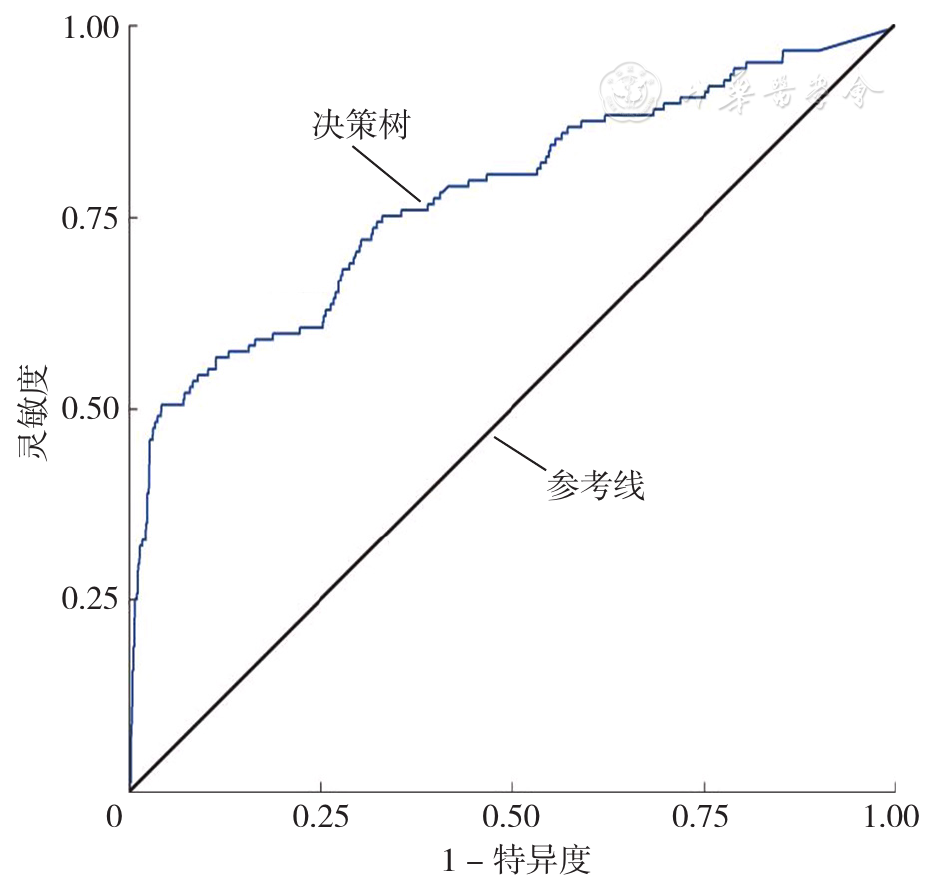
图9 基于肠道菌群OTUs建立的区分NW组孕妇与OW组孕妇随机森林分类模型的ROC曲线
Figure 9 ROC curve of random forest classification model based on maternal intestinal flora OTUs for distinguishing between a baby with normal birth weight and a macrosomia
| [1] |
|
| [2] |
|
| [3] |
|
| [4] |
|
| [5] |
|
| [6] |
潘娣. 运动与饮食干预下肥胖儿童体重变化的能量平衡与失衡[D]. 北京:北京体育大学,2017.
|
| [7] | |
| [8] |
宋伟,张志,梁胜男,等. 肥胖孕妇孕期增重及其与不良妊娠结局的关系[J]. 中华围产医学杂志,2021,24(5):352-359. DOI:10.3760/cma.j.cn113903-20200821-00843.
|
| [9] |
冯银宏,钱晶晶,宋学军. 孕前体重指数、孕期体重增加与妊娠期并发症及妊娠结局的关系[J]. 中国现代医学杂志,2021,31(2):92-96.
|
| [10] |
金玉,齐宸,管滔,等. 孕期增重过多对孕妇肠道菌群及妊娠结局的影响[J]. 中国微生态学杂志,2019,31(5):509-511,518. DOI:10.13381/j.cnki.cjm.201905003.
|
| [11] |
吴莎. 妊娠期糖尿病孕妇体重、肠道菌群的组成变化特点及对妊娠结局的影响[J]. 中国医师杂志,2019,21(6):909-911. DOI:10.3760/cma.j.issn.1008-1372.2019.06.026.
|
| [12] |
谢幸,苟文丽. 妇产科学[M]. 8版. 北京:人民卫生出版社,2013.
|
| [13] |
|
| [14] |
|
| [15] |
|
| [16] |
|
| [17] |
|
| [18] |
|
| [19] |
|
| [20] |
|
| [21] |
|
| [22] |
王佩,马良坤,刘俊涛. 早/中孕期孕妇肠道菌群差异及其与妊娠期糖尿病的关系:前瞻性队列研究[J]. 协和医学杂志,2021,12(5):721-728.
|
| [23] |
张青松,王妮,秦家云,等. 妊娠期便秘孕妇与健康孕妇肠道菌群差异研究[J]. 湖北医药学院学报,2021,40(4):407-412,442. DOI:10.13819/j.issn.2096-708X.2021.04.017.
|
| [24] |
|
| [25] |
|
| [26] |
|
| [1] | 刘斐然, 陈明皇, 赵率红, 白文佩. 随机森林模型在输卵管再通术后妊娠预测中的应用研究[J]. 中国全科医学, 2025, 28(11): 1361-1366. |
| [2] | 姜荣生, 张龙, 管其凡, 张静, 吴元丰, 刘明军. 短链脂肪酸在2型糖尿病中的作用研究进展[J]. 中国全科医学, 2024, 27(24): 3031-3037. |
| [3] | 陈文胜, 刘文明. 肠道菌群在脓毒症相关性肝损伤发病与治疗中的作用研究进展[J]. 中国全科医学, 2024, 27(21): 2665-2671. |
| [4] | 代愉恒, 高畅, 梁新袖, 卢莎, 华雯, 郑钜圣, 胡文胜. 妊娠期糖尿病患者肠道菌群特征与妊娠期高血压疾病的关联研究[J]. 中国全科医学, 2024, 27(02): 156-162. |
| [5] | 肖礼其, 杨莉, 崔赛仙, 张娅袁, 王玉路, 何燕. 高盐诱导肠道菌群紊乱调节盐敏感性血压的机制研究[J]. 中国全科医学, 2023, 26(29): 3704-3709. |
| [6] | 张振东, 蔡斌, 王宏伟, 乔增勇. 肠道菌群及其代谢产物苯乙酰谷氨酰胺在慢性心力衰竭患者中的变化研究[J]. 中国全科医学, 2023, 26(29): 3665-3673. |
| [7] | 唐彬秩, 阳倩, 凌其英, 李茂军, 石伟, 吴青. 极低体质量近存活期分娩儿一例的出生后早期管理[J]. 中国全科医学, 2023, 26(20): 2559-2566. |
| [8] | 张玉双, 孔令洋, 管佳畅, 李建波, 王一然, 王瑜, 李晶. 基于16S rDNA测序探索食管鳞状细胞癌患者肠道菌群特征[J]. 中国全科医学, 2023, 26(20): 2496-2502. |
| [9] | 傅伟强, 周剑波, 吴雄健, 黄才斌. 肠道菌群视角下非酒精性脂肪性肝病的治疗策略[J]. 中国全科医学, 2023, 26(06): 742-748. |
| [10] | 岑秋宇, 庞日朝, 崔艳如, 魏娟芳, 张安仁. 鼠李糖乳杆菌对炎症性肠病的影响机制研究进展[J]. 中国全科医学, 2022, 25(36): 4595-4600. |
| [11] | 李超, 杨永忠, 王慧, 王学林, 孟睿, 司志康, 郑子薇, 陈圆煜, 武建辉. 听力受损风险评估模型的建立与评价研究[J]. 中国全科医学, 2022, 25(35): 4418-4424. |
| [12] | 陶帅, 韩星, 孔丽文, 汪祖民, 谢海群. 基于步态的机器学习模型识别遗忘型轻度认知障碍和阿尔茨海默病[J]. 中国全科医学, 2022, 25(31): 3857-3865. |
| [13] | 莫蕾, 钟萍. 孕早中期孕妇肠道菌群差异与子痫前期发病关系的研究[J]. 中国全科医学, 2022, 25(20): 2489-2492. |
| [14] | 黄筱钧, 杨锦, 雷亚琪美, 曾志杰, 金朝晖. 以肠道菌群为靶点的新型辅助降压模式研究进展[J]. 中国全科医学, 2022, 25(18): 2297-2302. |
| [15] | 岑秋宇, 庞日朝, 胡晓敏, 崔艳如, 张安仁. 罗伊乳杆菌对肠屏障功能调节作用的研究进展[J]. 中国全科医学, 2022, 25(15): 1918-1922. |
| 阅读次数 | ||||||
|
全文 |
|
|||||
|
摘要 |
|
|||||





